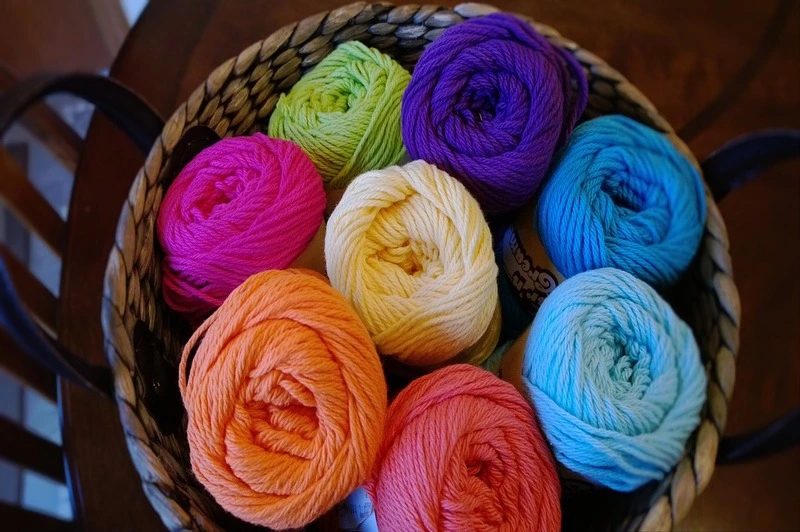
When you first start learning how to crochet, it’s easy to get confused and overwhelmed. There are so many crochet hooks and yarns to choose from, and picking the wrong one can definitely make learning how to crochet more difficult.
The best crochet hook size for beginners is 5 mm (US size H-8). It’s a nice medium size that’s easy to grip and will create stitches that are large enough to see clearly. But what if you have already bought a crochet hook or have been gifted one? Any crochet hook that is sized 4 mm (US G-6) to 6 mm (US J-10) is suitable for beginners. I would not recommend for beginner crocheters to use any hook smaller than 4 mm.
US Sizing vs Metric Sizing
Another confusion beginner crocheters face is the different ways companies label the size of their crochet hooks. Metric sizing tells you the exact diameter of the crochet hook in millimeters. US sizing uses a letter, or both a letter and a number, to represent the size of the crochet hook. The sizes are in alphabetical order: B-1 is the smallest size hook and T/X is the largest size. This sounds fairly straightforwards, but different companies may use different letters than their competitors, so a crochet hook that is 9 mm in diameter could be labeled size M by one company and size N-13 by another. Additionally, 2.5 mm, 7 mm, and 12 mm crochet hooks do not have an equivalent US size.
Considering all of this, I recommend using metric sizing. Buy crochet hooks that are labeled in millimeters, and use patterns that specify the hook size in metric. Most pattern designers do use metric sizing, and the Craft Yarn Council has a hook size conversion chart if you need the metric equivalent to a US sized crochet hook.
Types of Crochet Hooks
Crochet hooks can be made out of many different materials. The most common are bamboo, plastic, and aluminum, which are all great for beginners.
Bamboo hooks are lightweight and more textured than plastic and aluminum hooks. They are a great choice if you have trouble with your yarn slipping off of your crochet hook. Bamboo is biodegradable and a renewable resource, making it the most eco-friendly option.
Plastic hooks are lightweight and inexpensive, but do break more easily than bamboo and aluminum hooks. Yarn glides more easily on plastic hooks than on bamboo hooks, but they’re not as slippery as aluminum hooks.
Aluminum hooks are less comfortable to use compared to bamboo and plastic hooks because they are heavier and more rigid. You might find making chains and pushing your crochet hook through stitches easier with an aluminum hook, as they’re very smooth and slick.
No matter which material you choose, you’ll want to buy a crochet hook with a handle. A soft handle will help prevent hand and wrist pain caused by the repetitive movements of crocheting, and are better for people with arthritis and other similar conditions. These crochet hooks are generally labeled as ergonomic hooks.
What Yarn To Use

The reason there are so many different sizes of crochet hooks is because there are just as many different sizes and types of yarn. Thin yarns work best with small crochet hooks, and thick yarns work the best with bigger hooks. The thickness of the yarn is referred to as the yarn’s weight. A 5 mm (US H-8) hook works best with number 4 medium weight yarn, also known as worsted or aran weight yarn.
There are many types of fibers used to create yarn. Luckily, beginner crocheters don’t need to worry about the exact type of yarn they use. The yarn you choose should be smooth and soft to the touch, without any texture that would make your stitches harder to see. Beginner crocheters should stay away from fluffy blanket yarn, chenille yarn, and velvet yarn for this reason.
Other Tools You’ll Need
One tool that can be extremely helpful for beginner crocheters is a stitch marker. You simply slide the marker in the first stitch of your first row, so when you crochet your next row, you will know exactly where to put your last stitch. Repeat this with each row and your project will be perfectly straight with no extra stitches.
When it’s time to finish your crochet project, you will need a pair of scissors to cut your yarn, and a yarn needle to weave in the ends of your yarn. You can use any pair of scissors you already have, but you’ll need a special needle with a large eye to weave in your ends. You can find yarn needles in the same section as crochet hooks and knitting needles in your local craft store.
I hope you’ve found this article helpful. If you have any questions about crochet hooks or crochet in general, leave a comment down below and I’ll do my best to answer them.
